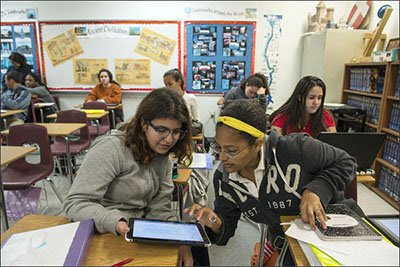Status of Tech Infrastructure and the E-Rate
The guarantee of innovation in the classroom is completely subject to dependable foundation. Be that as it may, in numerous parts of the nation, schools still battle to get moderate access to fast Internet and/or hearty remote availability.
A normal school region system includes various segments. In 2014, the Federal Communications Commission built up network focuses for a percentage of the pieces:
An association with the more extensive Internet gave by an outside administration supplier to the area office (or another focal region center point).
To bolster schools (and libraries) in building and paying for these systems, the FCC in 1996 built up a project known as the E-rate. Expenses on buyers' telephone charges support the system, which has paid out more than $30 billion since its commencement.
In 2014, the commission redesignd the E-rate, raising the system's yearly spending top from $2.4 billion to $3.9 billion and organizing support for broadband administration and remote systems. The progressions were at that point being felt as of Fall 2015; after consistently declining for a considerable length of time, the quantity of schools and libraries applying for E-rate stores for remote system gear soar, with almost the greater part of the candidates anticipated that would get a segment of the $1.6 billion in general remote related solicitations.
As a component of the E-rate upgrade, the FCC additionally affirmed a progression of administrative changes went for leveling the playing field for rustic and remote schools, which regularly confront two major battles: getting to the fiber-optic links that specialists say are key to meeting the FCC's long haul objectives, and finding moderate rates.
Framework in a few settings can likewise be taken to incorporate learning gadgets, computerized content, and the strategies and rules that represent how they are relied upon to be utilized as a part of schools, (for example, "capable use approaches" and "advanced citizenship" programs meant to guarantee that understudies and staff are utilizing innovation fittingly and as a part of backing of learning objectives.)
Another enormous—and regularly disregarded—part of framework is what's known as interoperability. Basically, the term alludes to basic benchmarks and conventions for organizing and taking care of information with the goal that data can be shared between programming programs. Various structures layout information interoperability principles for various purposes. Numerous plan to see the field settle on regular benchmarks in the coming years.
A normal school region system includes various segments. In 2014, the Federal Communications Commission built up network focuses for a percentage of the pieces:
An association with the more extensive Internet gave by an outside administration supplier to the area office (or another focal region center point).
- Target: 100 megabits for every second per 1,000 understudies in the short-term, and 1 Gigabit for each second per 1,000 understudies in the long haul.
- A "Wide Area Network" that gives system associations between the locale's focal center and the greater part of its grounds, office structures, and different offices.
- Target: Connections equipped for conveying 10 Gigabits for each second per 1,000 understudies.
- "Neighborhood" that give associations inside of a school, including the gear important to give Wi-Fi administration inside classrooms.
- Focus on: The FCC prescribed an overview to decide a suitable measure. Numerous school-innovation advocates call for inner associations that bolster 1-to-1 figuring.
To bolster schools (and libraries) in building and paying for these systems, the FCC in 1996 built up a project known as the E-rate. Expenses on buyers' telephone charges support the system, which has paid out more than $30 billion since its commencement.
In 2014, the commission redesignd the E-rate, raising the system's yearly spending top from $2.4 billion to $3.9 billion and organizing support for broadband administration and remote systems. The progressions were at that point being felt as of Fall 2015; after consistently declining for a considerable length of time, the quantity of schools and libraries applying for E-rate stores for remote system gear soar, with almost the greater part of the candidates anticipated that would get a segment of the $1.6 billion in general remote related solicitations.
As a component of the E-rate upgrade, the FCC additionally affirmed a progression of administrative changes went for leveling the playing field for rustic and remote schools, which regularly confront two major battles: getting to the fiber-optic links that specialists say are key to meeting the FCC's long haul objectives, and finding moderate rates.
Framework in a few settings can likewise be taken to incorporate learning gadgets, computerized content, and the strategies and rules that represent how they are relied upon to be utilized as a part of schools, (for example, "capable use approaches" and "advanced citizenship" programs meant to guarantee that understudies and staff are utilizing innovation fittingly and as a part of backing of learning objectives.)
Another enormous—and regularly disregarded—part of framework is what's known as interoperability. Basically, the term alludes to basic benchmarks and conventions for organizing and taking care of information with the goal that data can be shared between programming programs. Various structures layout information interoperability principles for various purposes. Numerous plan to see the field settle on regular benchmarks in the coming years.
















